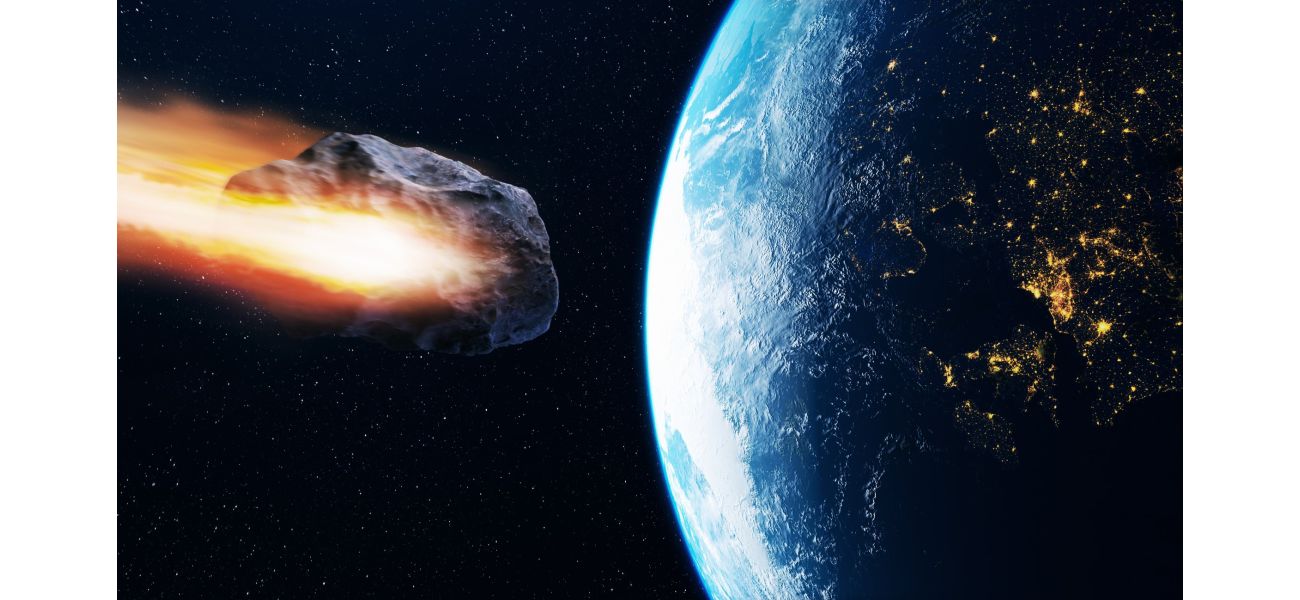Scientists are trying out a plot from a 90s movie to stop asteroids, but is it effective?
It's considered a top priority for the nation.
September 24th 2024.

Hollywood has always been fascinated with the idea of catastrophic asteroids striking the Earth and causing widespread devastation. And it seems like scientists are just as concerned, as they too have been actively searching for ways to prevent such a catastrophic event from happening.
Recently, a team of top researchers may have found a new solution to this looming threat - and it might sound familiar to movie buffs. Inspired by popular Hollywood producers, scientists have turned to nuclear bombs as a potential tool for defending our planet against incoming asteroids.
Drawing on their expertise in ensuring the safety and security of the United States' nuclear arsenal, physicists at Sandia National Laboratories conducted an experiment to test the effectiveness of this method. Their findings showed that a mega pulse of radiation from a nuclear blast could potentially vaporize part of an approaching asteroid, creating a rapidly expanding gas ball that could alter its trajectory and divert it away from Earth.
The sheer power of this blast is astounding - it can heat the asteroid's surface to tens of thousands of degrees, resulting in a massive ball of gas that could push the asteroid off course. If their calculations are correct, this method could potentially save the planet from a doomsday scenario.
This approach may sound familiar to fans of the 90s movie Armageddon, where the protagonist, played by Bruce Willis, successfully diverted an asteroid by dropping a bomb down a drill hole. However, the scientists point out that this tactic would not have the same effect in real life.
In their research published in Nature Physics, the team highlights the devastating impact an asteroid collision could have on our planet. They stress that while most asteroids do not pose a significant threat, the rare but catastrophic collisions could lead to regional devastation or even the extinction of life on Earth. As a result, preventing such events has become a national priority.
It's worth noting that while the catastrophic asteroid that wiped out the dinosaurs 66 million years ago was an extremely rare event, smaller asteroids can still pose a danger. In 2013, a 60-foot wide meteor exploded over Chelyabinsk, Russia, injuring thousands of people.
To conduct their experiment, the researchers used X-rays from a nuclear device and targeted small mock-up asteroids in a vacuum to simulate the conditions in space. They observed how the pulses heated up the surface of the asteroids, producing a vapor plume that changed their direction. The results of their study suggest that an asteroid with a diameter of up to 2.5 miles heading towards Earth could be diverted using this method, potentially saving the planet from significant damage.
Recently, a team of top researchers may have found a new solution to this looming threat - and it might sound familiar to movie buffs. Inspired by popular Hollywood producers, scientists have turned to nuclear bombs as a potential tool for defending our planet against incoming asteroids.
Drawing on their expertise in ensuring the safety and security of the United States' nuclear arsenal, physicists at Sandia National Laboratories conducted an experiment to test the effectiveness of this method. Their findings showed that a mega pulse of radiation from a nuclear blast could potentially vaporize part of an approaching asteroid, creating a rapidly expanding gas ball that could alter its trajectory and divert it away from Earth.
The sheer power of this blast is astounding - it can heat the asteroid's surface to tens of thousands of degrees, resulting in a massive ball of gas that could push the asteroid off course. If their calculations are correct, this method could potentially save the planet from a doomsday scenario.
This approach may sound familiar to fans of the 90s movie Armageddon, where the protagonist, played by Bruce Willis, successfully diverted an asteroid by dropping a bomb down a drill hole. However, the scientists point out that this tactic would not have the same effect in real life.
In their research published in Nature Physics, the team highlights the devastating impact an asteroid collision could have on our planet. They stress that while most asteroids do not pose a significant threat, the rare but catastrophic collisions could lead to regional devastation or even the extinction of life on Earth. As a result, preventing such events has become a national priority.
It's worth noting that while the catastrophic asteroid that wiped out the dinosaurs 66 million years ago was an extremely rare event, smaller asteroids can still pose a danger. In 2013, a 60-foot wide meteor exploded over Chelyabinsk, Russia, injuring thousands of people.
To conduct their experiment, the researchers used X-rays from a nuclear device and targeted small mock-up asteroids in a vacuum to simulate the conditions in space. They observed how the pulses heated up the surface of the asteroids, producing a vapor plume that changed their direction. The results of their study suggest that an asteroid with a diameter of up to 2.5 miles heading towards Earth could be diverted using this method, potentially saving the planet from significant damage.
[This article has been trending online recently and has been generated with AI. Your feed is customized.]
[Generative AI is experimental.]
0
0
Submit Comment





